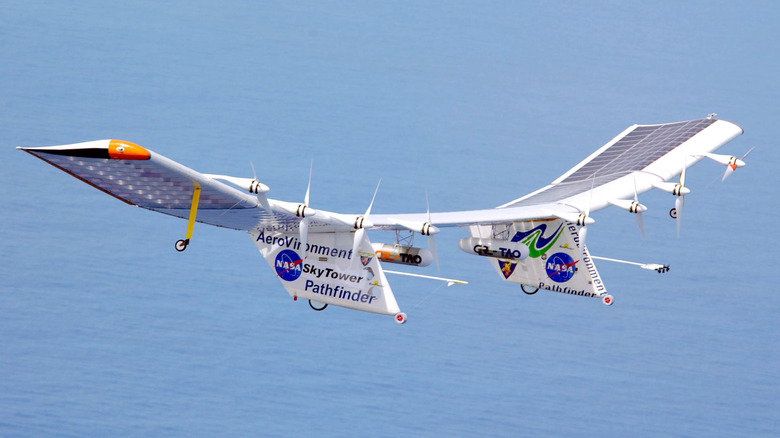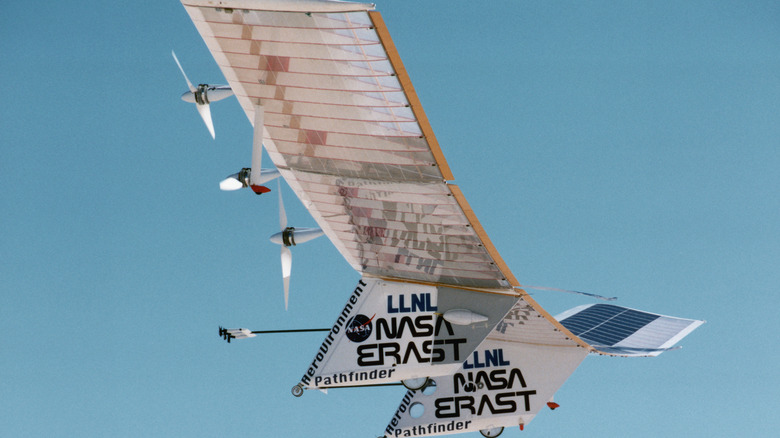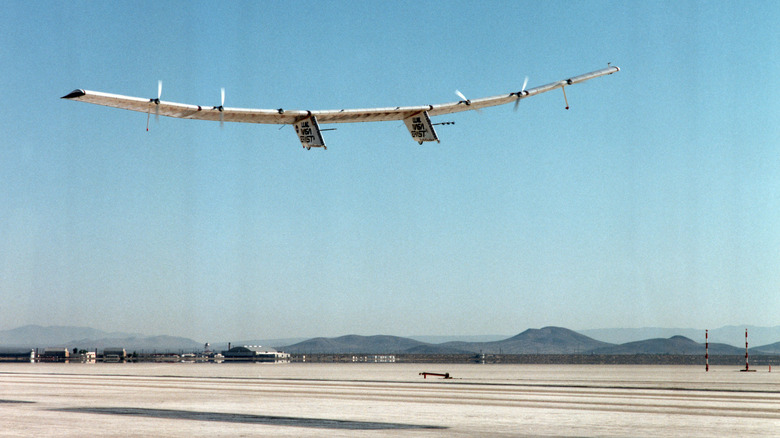NASA's Project Pathfinder Proved Renewable Energy Flight Was Possible Nearly 30 Years Ago
While the EV market is bringing the auto industry closer to more renewable vehicles on the road, a solar-powered aircraft called Pathfinder was proving flight powered by renewable energy was possible over three decades ago. The UAV was designed in the early 1980s by contractor AeroVironment for a classified project. However, the technology powering the craft had not yet matured to an acceptable level, and Pathfinder was mothballed.
The project was brought back by the Ballistic Missile Defense Organization in 1993 before transferring it to NASA a year later. As part of NASA's Environmental Research Aircraft and Sensor Technology (ERAST) program, Pathfinder truly thrived. It was there that the aircraft — before and after being modified in 1998 as the Pathfinder-Plus — aided NASA and researchers at the University of Hawaii and the University of California in several scientific missions. Its accomplishments included looking at coral reefs, forest nutrients, sediment and algae concentrations in coastal waters, and forest regrowth after a devastating hurricane.
It also flew several test missions to prove that solar-powered UAVs could be used in telecommunication, and, perhaps more presciently, as commercial aircraft.
The Pathfinder broke records for solar-powered aircraft
The Pathfinder struggled at first, but after being acquired by NASA, it began to soar — literally. To prove that extremely light (and fragile) aircrafts powered by the sun could take off, fly at very high altitudes, and land successfully, it flew in several test missions. Many of these test flights were conducted in and over Hawaii. In 1995, the Pathfinder set its first altitude record during a 12-hour flight, becoming the first solar-powered aircraft to fly successfully at 50,000 feet. Less than two years later, it shattered that record at 71,530 feet, the highest recorded flight for not just a solar-powered aircraft, but a propeller-driven one as well.
In 1998, it was modified, given longer wingspan, and redubbed the Pathfinder-Plus. This allowed it to beat its own record by reaching an altitude of 80,201 feet. By using solar cells instead of liquid fuel as power, the craft was able to achieve such great heights thanks in part to its extremely light weight. However, its unique design was also instrumental in its record-breaking run.
The Pathfinder had some very quirky specifications
It may have looked funky, but since it was a UAV meant for high altitudes, it didn't really need to look traditional. The wingspan of the original Pathfinder was 98.4 feet, with a wing chord of eight feet. It was 12 feet long and weighed around 560 pounds. It had a payload capacity of 100 lbs and could cruise between 7 – 20 mph. After it was modified into the Pathfinder-Plus, its wingspan grew to 121 feet and its weight to around 700 lbs. Its payload capacity was increased by 50 lbs.
The solar system on the Pathfinder could generate 7,500 watts, while the Pathfinder-Plus, which could hold more, could produce 12,500 watts. The solar energy they collected powered electric motors that could generate 1.5 kilowatts each. Both aircraft could fly for about 14 to 15 hours, during daylight of course. Backup batteries allowed for two to five hours of flight in low-light conditions or after dark.
While later craft used more advanced specs to fly longer and higher, the Pathfinder was instrumental in proving that aircraft powered by renewable energy could not just fly, but break records. As the costs of jet fuel continue to soar, perhaps the airline industry can learn some lessons from the Pathfinder project and move toward a cheaper, more sustainable future for powering aircraft.


